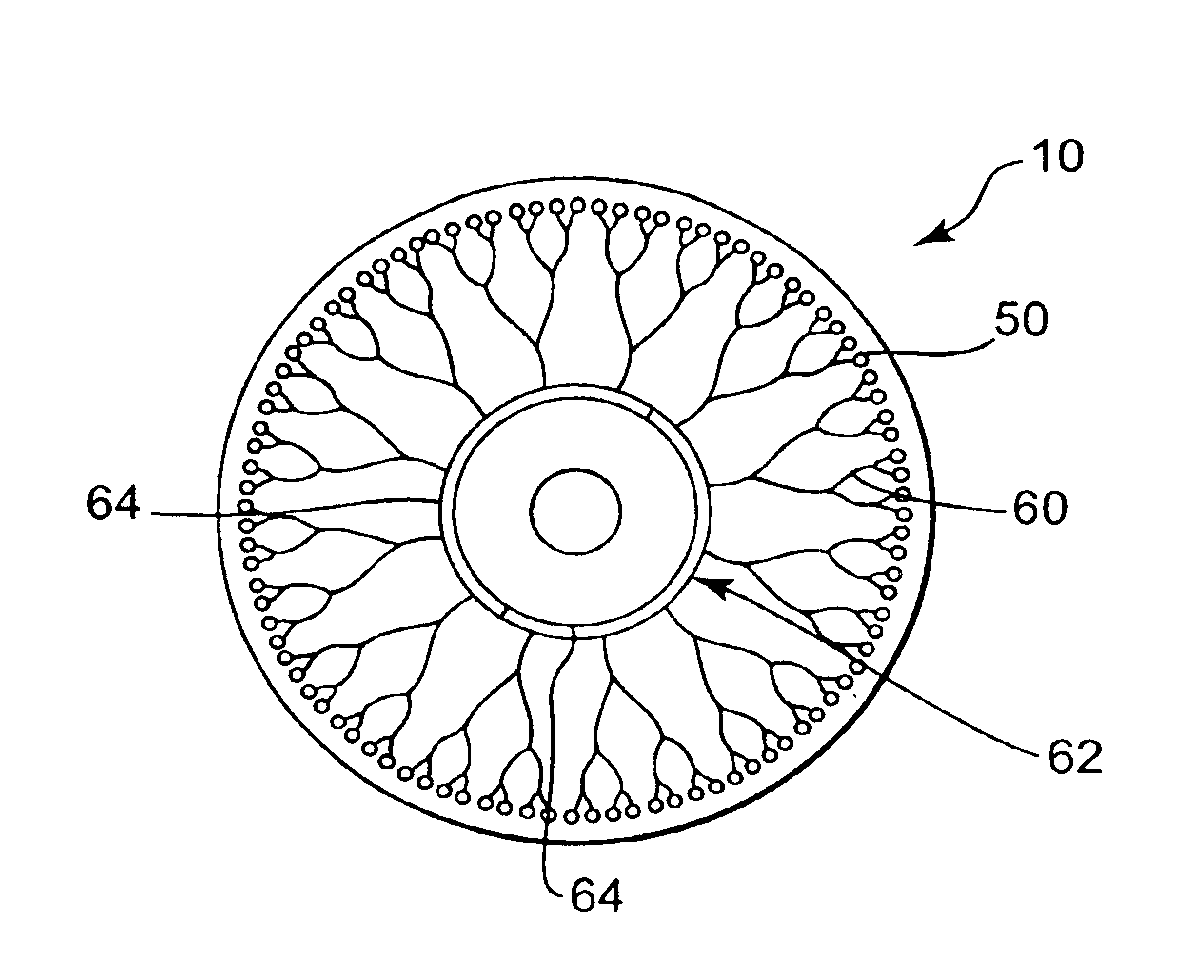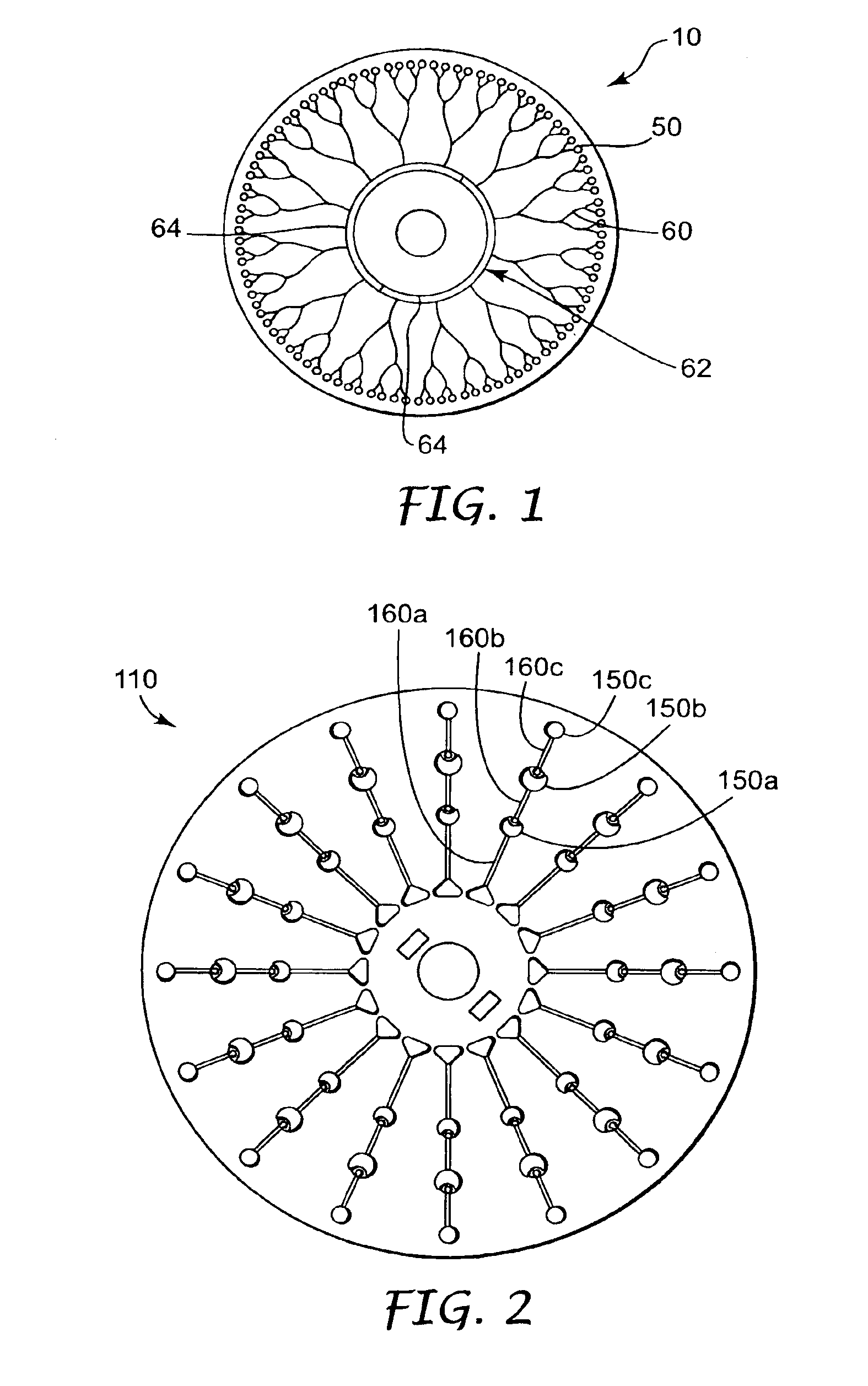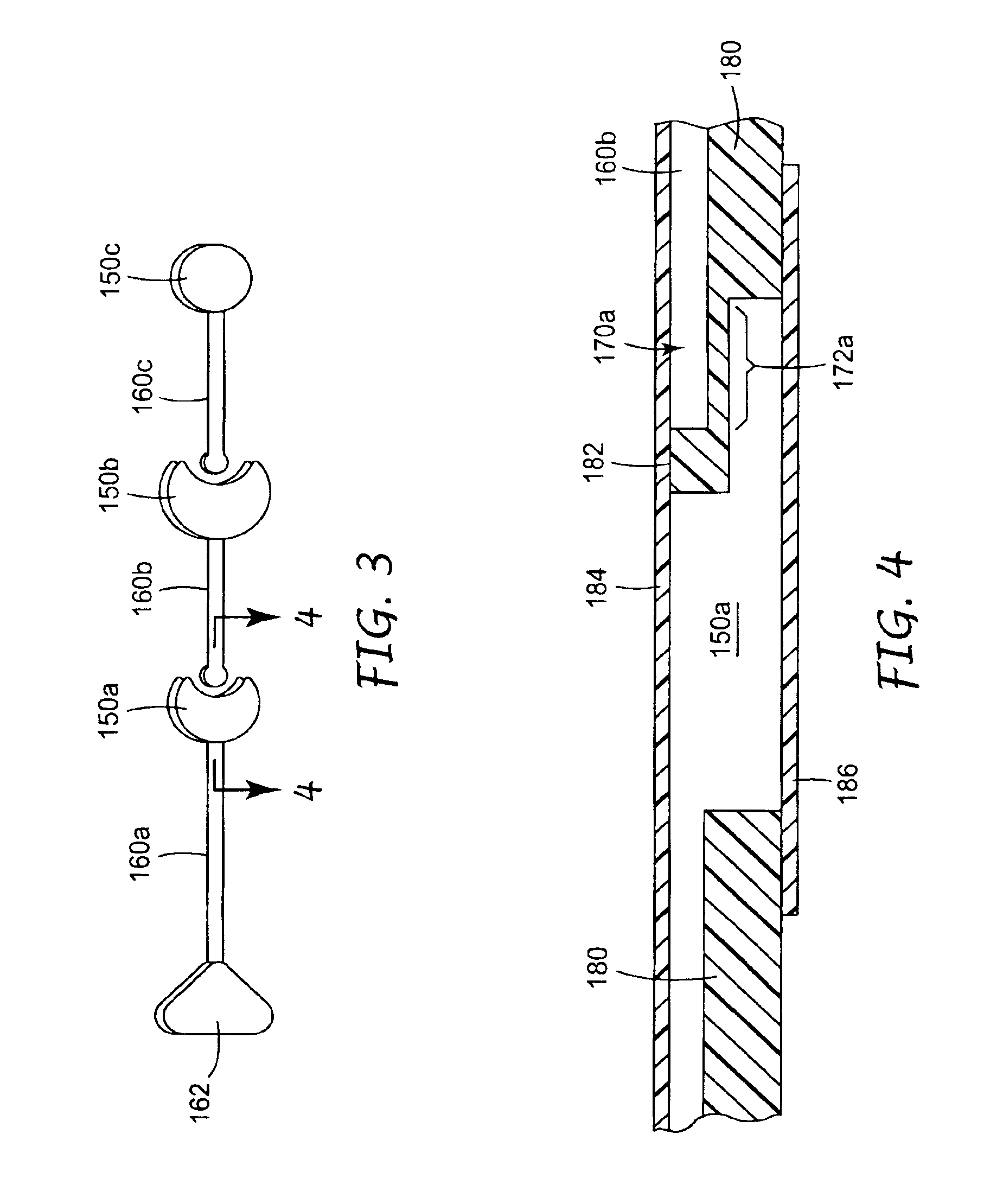Methods and devices for removal of organic molecules from biological mixtures using anion exchange
a biological mixture and anion exchange technology, applied in the direction of anion exchangers, shaking/oscillating/vibration mixers, dna preparation, etc., can solve the problems of dye artifacts, inability to sufficiently reduce concentration, and inability to incorporate microfluidic devices. to achieve the effect of high throughpu
- Summary
- Abstract
- Description
- Claims
- Application Information
AI Technical Summary
Benefits of technology
Problems solved by technology
Method used
Image
Examples
example 1
Preparation of PES / PSSA Membrane Columns for Sequencing Reaction Clean-up
[0098]A 47-millimeter (47-mm) diameter disk of polyethersulfone (PES) / copolymer ion-exchange membrane available under the trade designation SB-6407 from Pall Corp., East Hills, N.Y. was dipped briefly in methanol to thoroughly wet the membrane and then washed with distilled water before transferring to a poly(sodium 4-styrenesulfonate) (PSSA) solution in deionized water. The PES membrane contains quaternary ammonium groups grafted onto the surface of the membrane. The PES membrane was soaked overnight in various weight percents of PSSA solutions (challenge concentrations) as indicated below, then washed 4 times with distilled water, and allowed to air dry.
[0099]The PES membrane with PSSA challenge concentrations of 0.01 wt-% to 0.1 wt-% were prepared as described above. Disks (4 mm diameter) of PSSA-coated PES membrane were placed in a 4-mm diameter column fitted with a polyethylene Porex frit (50-100μ pore siz...
example 2
Screening of PES / PSSA Membranes for Clean-up of BIGDYE Terminators v 2.0 Sequencing Reactions Using Capillary Electrophoresis and Reverse Phase HPLC
[0100]Capillary electrophoresis (CE) and reverse phase HPLC were used as analytical tools to evaluate the performance of materials for clean-up of sequencing reaction mixtures, specifically removal of dye terminators and sequencing ladder recovery, prior to sequencing analysis by ABI PRISM 310 or 3100 Genetic Analyzer (Applied Biosystems, Inc.).
[0101]Capillary Electrophoresis: Capillary electrophoresis analysis of purified sequencing reactions (purified as described in Example 1) was done with Beckman P / ACE MDQ Capillary Electrophoresis instrument (Beckman Coulter, Fullerton, Calif.) with a fluorescence detector (488-nanometer (nm) excitation, 530 nm to 700 nm emission) using a 75 micrometer ID, 30 cm long (20 cm to the detector) fused silica capillary. Runs were performed at 500 volts per centimeter (V / cm) (15 KV total) using 50 millimo...
example 3
BIGDYE Terminators v 2.0 Sequencing Reaction Clean-Up with PES / PSSA Membrane Columns
[0104]Various PES / PSSA membrane columns were prepared as described in Example 1. Five to ten microliters (5 to 10 μL) of an unpurified quarter strength sequencing reaction mixture (containing dye terminators and their hydrolysis products, DNA template, Taq polymerase, buffer, dNTPs, and primer) were pipetted onto each column and samples were purified as described in Example 1. The purified sequencing reactions were analyzed using rapid sequencing module on an ABI PRISM 310 Genetic Analyzer (Applied Biosystems, Inc.). The resulting electropherograms were manually checked for quality (like dye blobs, number of Ns) and compared against the reference sequence using the BLAST program available through GenBank. In addition, the electropherograms were analyzed using Phred base calling program (Codoncode Corp., Dedham, Mass.). The Phred program generates highly accurate, base-specific quality scores. The qua...
PUM
| Property | Measurement | Unit |
|---|---|---|
| surface area | aaaaa | aaaaa |
| pH | aaaaa | aaaaa |
| surface area | aaaaa | aaaaa |
Abstract
Description
Claims
Application Information
 Login to View More
Login to View More - R&D
- Intellectual Property
- Life Sciences
- Materials
- Tech Scout
- Unparalleled Data Quality
- Higher Quality Content
- 60% Fewer Hallucinations
Browse by: Latest US Patents, China's latest patents, Technical Efficacy Thesaurus, Application Domain, Technology Topic, Popular Technical Reports.
© 2025 PatSnap. All rights reserved.Legal|Privacy policy|Modern Slavery Act Transparency Statement|Sitemap|About US| Contact US: help@patsnap.com



